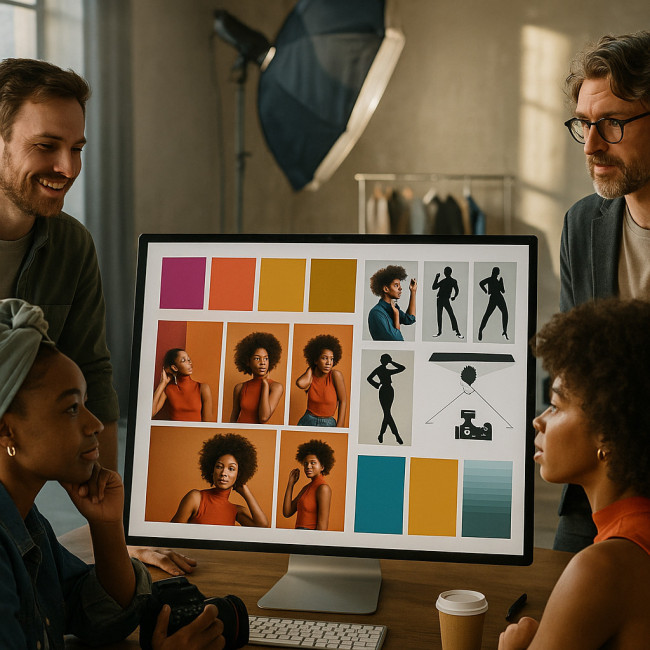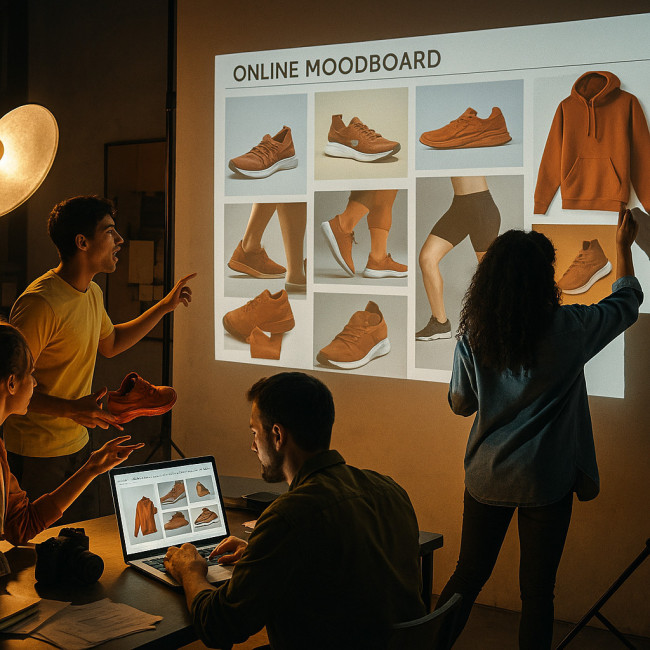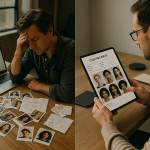Using online moodboards to align creative vision before the casting day
An online moodboard is more than a pretty collage; it is the fastest way to lock a shared visual language with every stakeholder before talent arrive on set. In this guide you will discover how to build, share and refine online moodboards that remove guesswork, cut pre-production time and boost cast confidence on the big day.
The strategic power of online moodboards in casting workflows

Traditional PDF briefs get lost in overflowing inboxes. Online moodboards, by contrast, stay live, interactive and accessible to everyone—from creative directors to stylists and models. They hold colour palettes, posing inspiration, lighting references and wardrobe notes in one central hub, keeping the entire team synchronised long before the first flash fires.
Benefits you will feel on casting day
- Clear visual expectations: talent reads images faster than text, so online moodboards slash explanations during fittings.
- Real-time updates: swap a hairstyle or backdrop reference instantly without version-control chaos.
- Mobile access: models review accepted looks on their phone in the taxi, arriving mentally prepared.
- Stakeholder buy-in: directors, agents and wardrobe departments comment directly on individual pins, reducing email loops.
Building an airtight online moodboard: step-by-step
1. Choose the right platform
| Platform | Collaboration features | Export options | Best for |
|---|---|---|---|
| Milanote | Live comments, drag-and-drop PDFs, colour picker | PNG, PDF, share link | Editorial or fashion shoots |
| Pinterest Boards | Invite-only boards, emoji reactions | Link sharing only | Quick inspiration sprints |
| PureRef Cloud | High-res image grid, sync across devices | PNG, reference pack | Detailed lighting studies |
| Adobe Express | Brand kit sync, multi-page boards | PDF, PNG, web link | Advertising campaigns |
Evaluate how each tool fits your workflow. If you already manage joint boards with a hair-and-make-up squad, sticking to a common platform avoids training pains.
2. Curate with intention
Online moodboards work best when every image earns its spot. Aim for 12–20 visuals that illustrate:
- Overall tone (bright, moody, avant-garde, corporate).
- Colour palette and textures.
- Wardrobe silhouettes, accessories and fabrics.
- Poses and facial expressions relevant to the brief.
- Lighting style: soft daylight, hard flash, colour gels.
Resist the urge to overload; too many references dilute clarity.
3. Structure your board for rapid scanning
Arrange visuals in horizontal rows: one row for palette, another for poses, a third for make-up and hair. Use labels or colour-coded frames so busy agents can jump straight to their area of concern. If you need inspiration, the article on moodboard sharing tools offers advanced layout tips.
4. Invite feedback early
Share the link as soon as the first draft is live. Encourage concise, time-boxed comments: “Review by Tuesday 18:00.” Online moodboards keep a comment history, so you avoid circular “but I thought...” conversations later.
5. Lock the board 48 hours before casting
Models need time to internalise looks, pack personal wardrobe items and adjust grooming routines. Freeze changes two days ahead unless an unavoidable brand directive lands. A stable online moodboard calms nerves and builds trust.
Integrating online moodboards with casting logistics
Sync with your talent directory
When filtering collaboration model profiles on Artfolio or similar platforms, paste the moodboard link inside the casting call. Applicants instantly gauge whether their look and skills match the shoot, saving everyone wasted auditions.
Create a one-sheet cheat code
Export the final online moodboard as a one-page PDF and attach it to the call sheet. Crew who lose Wi-Fi on location still carry a distilled visual roadmap.
Connect to your wardrobe racks
Tag garment codes beneath each outfit reference. Stylists pull exact pieces, and models arrive knowing which shoes or jewellery to bring. You will avoid last-minute size swaps.
Common pitfalls and how to avoid them
- Over-editing: frequent micro changes erode confidence. Decide fast, then commit.
- Copyright blind spots: credit photographers or brands under each image if the board may circulate publicly.
- Leaving out tech specs: include camera format, aspect ratio or colour space where relevant—DITs appreciate it.
- Ignoring inclusivity: show diverse body types and skin tones in your online moodboards so every cast member feels represented.
Amplify the impact: advanced online moodboard tactics
Embed video clips and GIFs
Moving references communicate flow and timing better than stills. A looping catwalk clip can demonstrate stride tempo for runway models, while a lighting test GIF shows strobe rhythm.
Set approval checkpoints
Most platforms let you assign a status label: “In review,” “Approved,” “Replaced.” Stakeholders visualise progress at a glance.
Link to production calendars
Integrate your online moodboard with a Google Calendar or Notion timeline. As each creative element is approved, automatically tick off milestones.
Use AI colour palette extraction
Some tools generate HEX codes from uploaded references. Pass those codes to your grading team or digital artists to maintain consistency throughout post-production and any moodboard-to-market pipeline.
Case study: saving a shoot in 24 hours

Three days before casting, a sportswear brand requested a total palette shift—from neon yellow to earthy terracotta. By updating the online moodboard and pinging all participants, the creative team secured matching sneakers overnight, briefed models on new attitude cues, and impressed the client with zero schedule slip. Without a centralised board, those rapid alterations would have created chaos.
FAQ
- Do I still need a printed look book if I use an online moodboard?
- Printed books can assist on set, but an online moodboard ensures everyone always views the latest version. Combine both for maximum security.
- Who should own the board—client or creative director?
- The project lead should own it, but grant edit rights to key contributors. Clear governance prevents accidental deletions.
- How many images make an effective online moodboard?
- Between 12 and 20 well-curated visuals generally cover tone, colour, wardrobe and lighting without overwhelming the viewer.
- Can I share confidential boards with external partners?
- Yes. Use password-protected links or invite-only access, and watermark sensitive frames if necessary.
Quick self-test: Are you moodboard-ready?
Take action now
Set up your first online moodboard today, invite key crew and watch how quickly creative alignment falls into place. You will enter casting day with confidence, clarity and a crew that shares one visual heartbeat.
Need deeper guidance? Subscribe to our newsletter and receive a free checklist that ensures your next moodboard wins unanimous approval in under 30 minutes.











